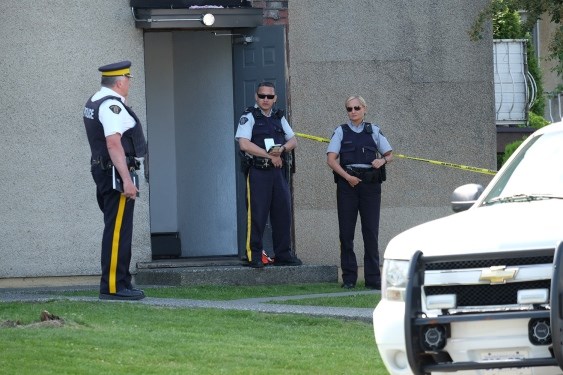It’s the middle of the afternoon on June 4, 2014, and a trio of Burnaby RCMP officers is heading to an apartment on Walker Avenue to deal with a person who has broken a window.
He has taken his shirt off, is sweating heavily and is walking into closed glass doors. The residents want him to leave.
Once there, the police are told the man inside is an extremely large ex-football player and has been using drugs and booze. In fact, a toxicology report would later show the six-foot-five, 300-pound man had cocaine and alcohol in his system.
The three RCMP members make their way into apartment and are immediately confronted by the suspect, who attacks one of the officers. During a struggle, police use a Taser (conducted energy weapon, or CEW) and a lateral neck restraint, eventually getting the man to the ground. In all, five people including three officers are needed to restrain the suspect, who is eventually handcuffed.
It’s at that point, the man goes into medical distress. Several attempts by police, firefighters and paramedics fail to save the man, and he dies 45 minutes after RCMP arrived at the apartment.
Last Friday, nearly two years later, the province’s Criminal Justice Branch announced there will be no charges against the RCMP officers in the case.
The details of the investigation into the police handling of the incident are detailed in a media statement from the branch.
“After reviewing the available evidence in its entirety, Crown counsel concluded that the evidence is not sufficient to prove, beyond a reasonable doubt, that the police officers used more force than was reasonably necessary to subdue and restrain the suspect, including their use of physical restraint, a CEW, a carotid neck restraint and, eventually, handcuffs,” the report stated.
“A review of the available evidence also discloses that notwithstanding the violent struggle that preceded the handcuffing of the suspect, all of the officers were, at all times, endeavouring to obtain or provide medical assistance to the suspect as soon as his distress became apparent.”
Some of the evidence in the investigation was provided by residents at the scene who expressed concern for the officer’s safety: “According to the witness ‘Nobody did anything wrong, ‘Nobody did anything that shouldn’t have been done. I’m pretty sure we were all in fear of him getting up.’ He also advised investigators, ‘I’m telling you right now if we didn’t come in there, I’m pretty sure it would have been a hell of a lot worse. …. The cops went in there, and uh, not even a minute man and you could hear BAM BAM, and then one officer screaming, ‘Get more help, get it now, get it now!’ He’s huge and he’s screaming too, and it’s going to take all three of them to save their own lives.’”
A forensic pathologist attributed the cause of death to the combined effects of cocaine toxicity, means of restraint and cardiomegaly (enlarged heart).
The name of the man was never released.



